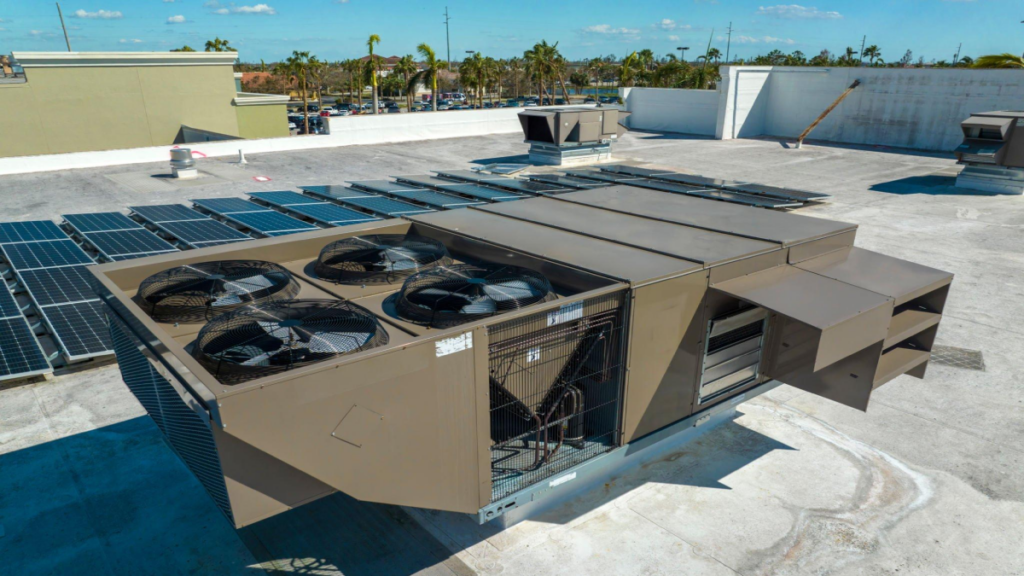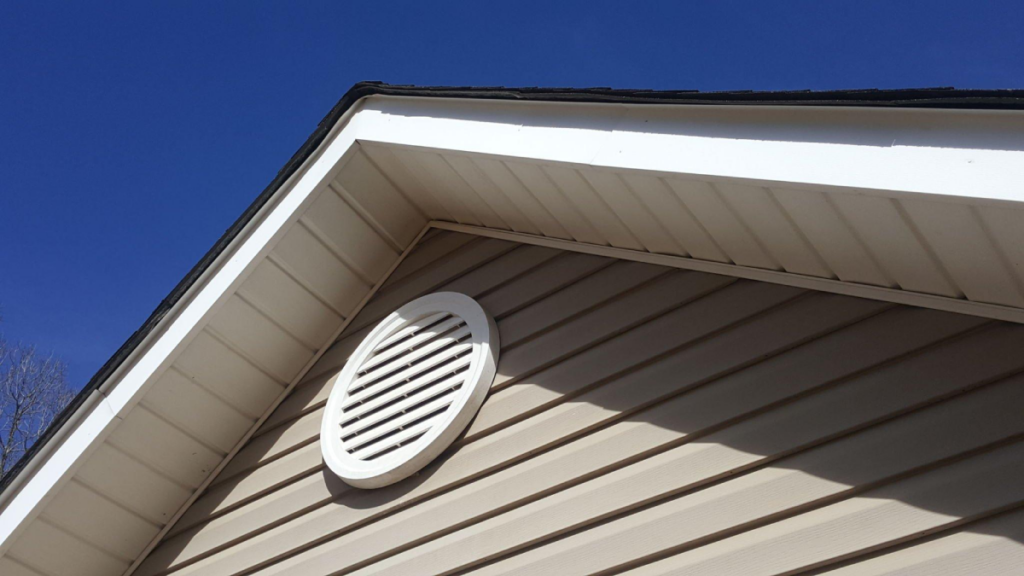ROOF VENTS
Roof vents, an often overlooked aspect of home infrastructure, play a crucial role in regulating the temperature and preventing moisture-related issues in our homes. This guide is designed to shed light on the importance of roof vents, how they operate, the various types available, and tips for proper installation and maintenance. By the end of this guide, you’ll understand why roof vents are far more than just an architectural afterthought; they are an essential component in prolonging the lifespan of your roof and enhancing the overall health of your home.
Introduction to Roof Vents

If you’re looking to improve the ventilation in your home, you may have come across the term “roof vents”. But what exactly are they, and how do they work? Roof vents are an essential component of any home’s ventilation system, allowing air to circulate freely throughout the attic and roof space. They come in a variety of shapes and sizes, from simple static vents to more advanced ridge vents and turbine vents. An efficient roof ventilation system can help to lower energy costs, prevent moisture buildup and protect against damage from ice dams. Whether you’re a homeowner or a contractor, it’s important to understand the basics of roof vents and how they can benefit your home.
Understanding the Function of Roof Vents

Understanding the function of roof vents is essential for homeowners who want to maintain a healthy and comfortable living environment. The primary function of roof vents is to improve ventilation in the attic and prevent moisture buildup, which can lead to various problems such as mold and mildew growth, wood rot, and damage to roof shingles. Roof vents also play a crucial role in regulating the temperature of the attic, reducing the risk of heat buildup during the summer months and preventing heat loss during the winter. Additionally, proper ventilation can extend the life of your roofing materials, saving you money in the long run. By understanding how roof vents work and ensuring that they are functioning correctly, homeowners can improve their indoor air quality, protect their homes from damage, and maintain a comfortable living space.
The Importance of Roof Vents in Home Maintenance

Proper home maintenance can be an overwhelming task. From maintaining a well-manicured lawn to keeping the interior clean and organized, it can be easy to let some important tasks slip through the cracks. However, one task that is crucial to the overall health of your home is the installation and maintenance of roof vents. These vents serve a critical purpose in your home’s ventilation system, preventing moisture buildup and avoiding potentially costly repairs. By understanding the importance of roof vents and taking the necessary steps to maintain them, you can ensure that your home remains a safe and healthy environment for you and your family.
Roof Vents and Temperature Regulation

Roof vents play an important role in regulating the temperature of a building. These vents are carefully engineered to allow hot air to escape from the attic during the summer months, which reduces the overall temperature of the building. During the winter, roof vents help to prevent moisture buildup, which can lead to mold and mildew growth. Proper installation and maintenance of roof vents helps to ensure that they function properly, providing maximum temperature regulation benefits year-round. By investing in a quality roof vent system, you can keep your home comfortable while also extending the lifespan of your roof.
Preventing Moisture with Roof Vents

If you’re a homeowner, preventing moisture damage to your roof is likely a top concern. Moisture can lead to rot, mold growth, and structural damage to your home. One effective way to prevent moisture damage is by installing roof vents. Ventilation systems ensure that warm, moist air can escape from your attic, and fresh, dry air can circulate in. By regulating the conditions in your attic, you can maintain a healthy home environment and avoid costly repair bills down the line. With various types of roof vents available, from ridge vents to soffit vents, it’s important to consult a professional to determine which option is right for your home.
Different Types of Roof Vents

A well-ventilated roof is essential for a healthy and long-lasting home. Different types of roof vents can provide the necessary airflow to keep the interior temperature stable and prevent moisture buildup. From ridge vents to gable vents, there are various options to choose from depending on your roof type and attic space. Roof vents can even be aesthetic and match the design of your roofing material. Investing in the right type of roof vent can improve your home’s energy efficiency and prevent potential damage to your roof.
Pros and Cons of Various Roof Vent Types

When it comes to choosing the right roof vent types for your home, there are a few factors to consider. First, it’s important to understand the different options available and their respective pros and cons. Ridge vents, for example, are a popular choice due to their low profile and ability to allow hot air to escape evenly along the entire roof ridge. However, they may be less effective in areas with low wind flow. On the other hand, turbine vents use wind to turn the turbine and suck hot air out of the attic. While they are effective in windy areas, they can be noisy and may not work as well in areas with low wind flow. It’s important to weigh these pros and cons and choose the roof vent type that works best for your specific needs and location.
Selecting the Right Roof Vent for Your Home

Choosing the proper roof vent for your home may seem like a small decision, but it can have a significant impact on your home’s comfort and energy efficiency. Without the right vent, your home may experience poor ventilation, causing unwanted moisture buildup and harmful mold growth. However, with the right roof vent, you can significantly improve your home’s air circulation, leading to better overall indoor air quality. It’s essential to consider factors such as your home’s size, location, and type of roofing material when selecting the right roof vent. So, take your time and research your options carefully to make an informed decision.
The Process of Installing Roof Vents

The process of installing roof vents is crucial for maintaining a comfortable indoor environment and increasing your home’s overall energy efficiency. Roof vents usually come in various sizes and styles, and the installation process can vary depending on the type of roof you have. Nonetheless, a typical installation process would involve selecting the appropriate vent type, locating the area of the roof that needs a ventilation system, and determining the size of the vent needed. Professional installation would ensure that the roof structure is not compromised during the process, and the vents are watertight and sturdy enough to withstand harsh weather conditions. As a homeowner, it’s essential to understand the value of roof ventilation and ensure that it’s done correctly to optimize its benefits.
Professional Installation or DIY: Making the Choice

When it comes to home improvement projects, one of the biggest decisions you’ll have to make is whether to opt for professional installation or go the DIY route. Each option has its own set of advantages and disadvantages, and ultimately, the decision will come down to your specific needs, budget, and skill level. Professional installation can give you peace of mind knowing that trained experts are handling the job, but it often comes with a higher price tag. On the other hand, DIY projects can save you money, but if you have little to no experience, you may end up wasting time and money fixing mistakes or even causing damage. The key to making the right choice is to evaluate your own abilities and weigh the costs and benefits of each option before making a decision.
Maintenance Tips for Roof Vents

Regular maintenance of roof vents is essential for optimal performance and longevity. Over time, debris such as leaves, branches, and bird nests can accumulate around and inside the vents, causing blockages that hinder proper ventilation. This can lead to increased energy bills, moisture problems, and even mold growth. Fortunately, proper maintenance is relatively simple and can be done by the homeowner with basic tools and supplies. Common maintenance tasks include regularly inspecting and cleaning the vents, sealing any leaks, and replacing damaged parts as needed. By following these simple maintenance tips for roof vents, homeowners can ensure that their home remains comfortable, energy-efficient, and free from moisture problems.
Common Problems and Solutions with Roof Vents

If you’re a homeowner, you know how crucial it is to maintain your roof. An overlooked aspect of roof maintenance is the roof vents. These vital components are responsible for regulating air flow in and out of your attic, which is essential for temperature control and preventing moisture buildup. However, like any other part of your roof, roof vents are subject to wear and tear over time. Common problems with roof vents include leaking, clogged screens, and broken motors. Fortunately, these issues are fixable with proper maintenance, such as regular cleaning and inspection. It’s essential to address these problems early on to prevent further damage to your roof’s structure and safeguard your home from costly repairs. If you notice any issues with your roof vents, don’t hesitate to contact a professional roofing contractor, who can offer expert services and solutions to protect your home.
Roof Vents, Energy Efficiency, and Cost Savings

A properly ventilated roof contributes in a big way to the overall energy efficiency of a home. By allowing air to circulate through the attic space, roof vents help regulate temperature and reduce the strain on your heating and cooling system. This translates into significant cost savings over time, as your HVAC system doesn’t have to work as hard to maintain a comfortable indoor temperature. Roof vents also help prevent moisture buildup, which can lead to mold growth and other structural damage. Overall, installing roof vents is a smart investment in both your comfort and your wallet.
Case Studies: The Impact of Proper Roof Ventilation

When it comes to keeping our homes comfortable, proper ventilation is key. This is especially true when it comes to the roof. Case studies have shown that proper roof ventilation is crucial for maintaining a healthy home. Without it, moisture and heat can build up, leading to serious damage to the roof and potential health hazards for those living inside. However, installing proper roof ventilation can make a huge difference. In fact, studies have shown that a properly ventilated roof can even lower energy costs and improve the lifespan of your roof. For homeowners looking to ensure their houses are as healthy and long-lasting as possible, investing in proper roof ventilation is a smart move.
Conclusion: The Long-Term Benefits of Proper Roof Ventilation
After conducting extensive research on the topic, it is clear that proper roof ventilation has a substantial impact on the long-term health of a property. A well-ventilated roof can prevent moisture buildup, which can lead to a host of problems such as mold growth and structural damage. Additionally, proper ventilation can regulate the temperature of the home, leading to lower energy costs and a more comfortable living environment. It is important to note that proper installation and maintenance of ventilation systems are crucial for effectively reaping the benefits of proper roof ventilation. In conclusion, investing in proper roof ventilation not only benefits the current occupants of a property but also ensures the longevity and value of the property for years to come.

